Is a viable secondary diamond industry in Canada a far-fetched idea?
by charlene_voisin | August 1, 2013 9:00 am
By Jacquie De Almeida
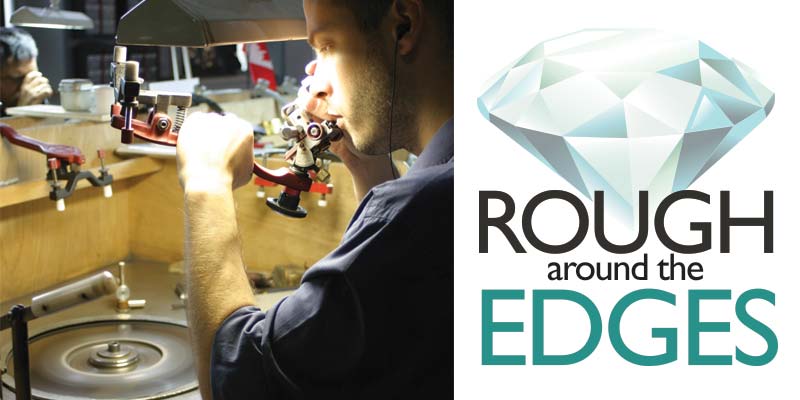 [1]
[1]
Size matters, at least where Canada’s diamond-cutting industry is concerned.
While we’d like to think Canadian diamonds come out of the ground and get sent to a nearby cutting and polishing facility where their brilliance and scintillation come to life, the reality is most stones are shipped to India, China, or another foreign cutting centre where labour costs are much less.
The higher-value diamonds starting at about half a carat (depending on who you talk to) are more likely to be cut on Canadian soil, as they are considered economically viable. The bigger the diamond, the lesser the labour costs are a factor in its overall price. It’s pretty straightforward, yet it’s the greatest obstacle to maintaining a large-scale cutting industry in Canada.
A cut above
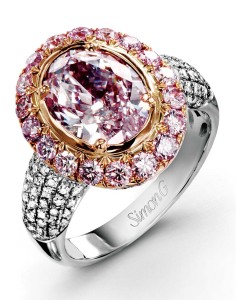 [2]
[2]Although the Great White North is the third-largest producer of diamonds by value in the world, cutting locally on the level of other centres remains elusive, despite attempts over the years to establish a secondary industry producing the coveted ‘mined, cut, and polished’ Canadian diamond.
Currently, there are only two companies—Crossworks Manufacturing and JSN Jewellery—cutting and polishing diamonds in Canada to any great degree.
A third, Embee Diamonds, produces anywhere from 1500 to 2000 carats per year, but it’s all niche product, says company owner and master diamond cutter, Mike Botha. At Embee, diamonds that are not economically viable are sent to India. That’s about 300 carats per month. Upon request, however, the company will cut stones weighing from .25 carats to .70 carats at its facility in Prince Albert, Sask.
According to Botha, ‘mined, cut, and polished in Canada’ is an attention-getter, whether among Canadians or consumers beyond our borders. But the quality of cut also matters.
“It is perceived as having extra cachet,” he explains, adding he regularly gets orders from the Far East for Embee’s proprietary cut. “The only thing that makes it sustainable is if we differentiate ourselves in Canada, and branding alone doesn’t cut it. If we simply present something generic, we cannot compete with India. However, if we differentiate ourselves by bringing a superior product to market in both design and in finish, we can compete because it’s a desirable and unique product. You have to have design, brand, and origin.”
Building bridges
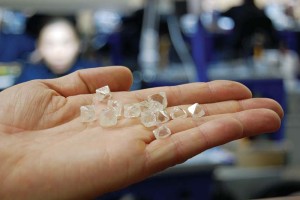 [3]
[3]Industry analyst Chaim Even-Zohar was an advisor in the Northwest Territories when diamonds were first discovered in Canada. He says collaboration between government and mining companies is critical.
“The problem with Canada is that it’s an open, free trade country,” Even-Zohar told Jewellery Business at the Prospectors & Developers Association of Canada (PDAC) conference in Toronto earlier this year.
“If you look at Botswana, it has factories because the government and De Beers say it has to. They may lose money, but they’re still there. [The Canadian] government cannot compel producers or private companies to sell goods to domestic factories. The agreements you have with De Beers and others are voluntary agreements.”
Razi Mizrahi, owner of Summit Diamonds, Inc., says one of the major obstacles is allocation of rough. Right now, most of the rough Canada produces gets shipped to places like Antwerp or London and mixed into boxes, with only about 10 per cent pulled out to be cut as Canadian.
Creating a rough diamond trading centre in Canada would not only make it easier for sightholders, who currently have to travel to those centres to do business, but it may help sustain a local secondary industry to a greater extent. Without a steady and meaningful supply of rough, opening more cutting factories makes little sense. Government incentives like tax breaks to help train new cutters may also make the proposition more enticing to companies looking to set up cutting factories.
David Gavin, president of the Diamond Bourse of Canada (DBC), is all for keeping more rough in Canada, but is not optimistic that will happen. He says recent discussions with major sightholders at the JCK Las Vegas show indicate there is some interest in local cutting if more rough was held back.
“But most said they would be happy to buy the rough in Canada and take it away to be cut,” he adds.
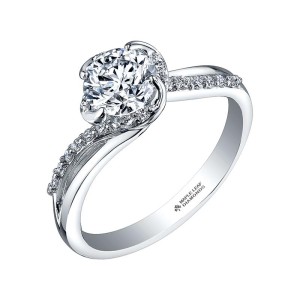 [4]
[4]Dylan Dix, group executive, marketing and external relations for Crossworks Manufacturing, agrees that partnerships between government and mining companies to provide goods are a must.
Through its agreements with the Ontario government and De Beers Canada, Crossworks receives 10 per cent of the rough by value originating from the Victor mine in Northern Ontario to be cut at its facility in Sudbury. Like Botha, Dix says branding and proprietary cuts can increase the allure to overcome the price difference.
“We’re competing against polishing in China and India,” Dix says. “You have to create competitive advantages for yourself. The Canadian diamond cutting industry will never have 250,000 cutters like in India, but I think we offer a way of looking at our resources that we can innovate and be competitive.”
Allen Shechtman, vice-president of the bourse and chief executive officer (CEO) of Martin Ross Group, says legislation is key to growing a secondary industry.
“From the bourse perspective, we need to look at lobbying the various governments that seem to have some control over who they allow in to first of all, prospect, and secondly, to take over and acquire mines,” he says. “They need to put some teeth into how they’re allowing investors to [enter the local diamond industry], whether it’s a Canadian investor or a foreign one. There should be some legislation in place to maintain more control over natural resources.”
Sensitivity issues
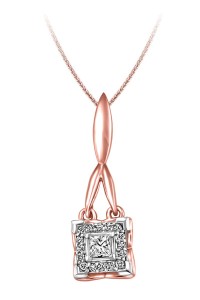 [5]
[5]The appeal of Canadian diamonds among consumers is strong, given their conflict-free status, Dix says.
“People are seeking something with greater depth,” he explains. “It’s no longer the diamond that is important. It’s now how it’s sourced and brought to market. People want to know where something comes from and to rely on a generic diamond label is not going to be the future of diamonds.
“‘Mined, cut, and polished in Canada’ resonates with North American consumers. It builds depth to the story.”
Still, the premium most Canadian diamonds carry is a factor consumers must weigh, Even-Zohar says. “I think if someone has a choice between a Canadian brand and generic, they will go for the Canadian, but if the Canadian is much more expensive, they’ll go for the generic.”
Botha disagrees. “Diamantaires will always find the cheapest place to cut their diamonds, and I don’t know if that’s necessarily the right thing. What we’ve found in North America and the United States in particular, is that consumers are becoming very conscience about where the diamond was produced and we’ve made inroads into the United States because of that. It’s a North American product made in North America, and people don’t mind they’re paying a higher price for diamonds.”
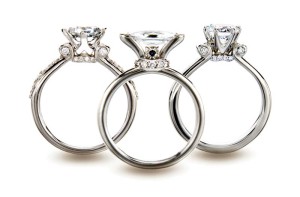 [6]
[6]He believes a large-scale local diamond-cutting industry is not far-fetched, given the lack of new diamond discoveries around the world in contrast to some of the Canadian diamond projects and mines currently in development and nearing production. He points to Shore Gold’s Star Diamond project near Prince Albert, Sask., as one example. With diamonds similar in nitrogen content to those found in Letseng, Lesotho—which is known to produce big diamonds—Star Diamond is poised to become a major player.
“This is going to create a lot of focus on Canada as the major source of diamonds in the world,” he says, adding preparations should be made now to capitalize on the diamond rush. The other factor to consider is that the gap between what it costs to cut in India—where 90 per cent of the world’s diamonds are manufactured—compared to Canada is closing slightly.
“With India’s economy growing like it is, it just follows naturally that wages will increase,” Botha says. “As equalization takes place in salaries in other cutting centres, you’re going to find a return to the North American market in all industries, not just the diamond industry.”
Dix is equally optimistic, although he stresses that setting up a cutting facility is extremely expensive. He estimates it takes about $7 million to bring $1 million worth of diamonds to market.
“You can create nodes of expertise in Canada that will enhance us, and in the future, maybe bring a greater diamond business here,” he adds. “There is a lot of potential here and with new mines and new opportunities, it will continue to grow.”
- [Image]: http://www.jewellerybusiness.com/wp-content/uploads/2013/08/IMG_7793.jpg
- [Image]: http://www.jewellerybusiness.com/wp-content/uploads/2013/08/Victor-Pink-Diamond-Ring.jpg
- [Image]: http://www.jewellerybusiness.com/wp-content/uploads/2013/08/Victor-146.jpg
- [Image]: http://www.jewellerybusiness.com/wp-content/uploads/2013/08/3703WG.jpg
- [Image]: http://www.jewellerybusiness.com/wp-content/uploads/2013/08/G1655P.jpg
- [Image]: http://www.jewellerybusiness.com/wp-content/uploads/2013/08/3.-Royal-Engagement-Rings-RBC-Marquis-princess.jpg
Source URL: https://www.jewellerybusiness.com/features/is-a-viable-secondary-diamond-industry-in-canada-a-far-fetched-idea/